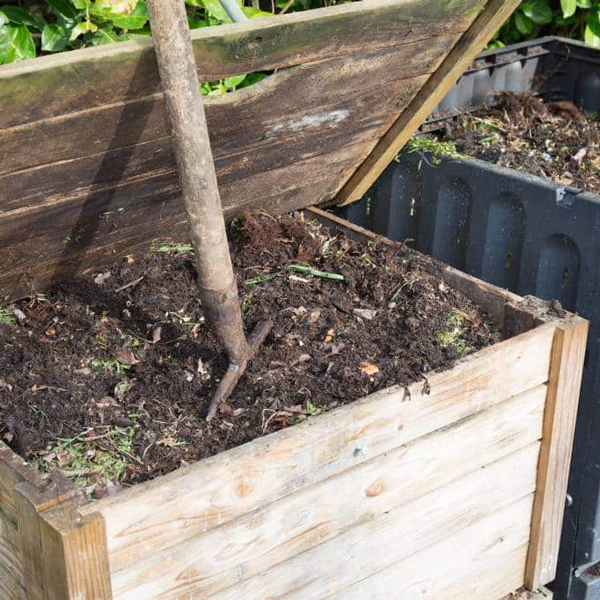
Now that we’ve experienced a killing frost, yard-cleanup time is upon us, and composting at home can be a great option for recycling many wastes from your yard. Advocates for ecological-awareness focus on the term “sustainable”, a concept that encompasses many aspects of how we approach our daily lives. Recycling, minimizing waste and reusing household items are examples of sustainability. And few homeowner practices are more sustainable, easier to manage, and more economical than composting at home: a natural alternative to relying upon chemical fertilizers.
By converting normal everyday organic household waste into a beneficial garden/potting soil additive, composting at home can make sense for most every homeowner; just follow these three basic steps:
- Choose a sunny area and assemble clean “feed stock” comprised of 2/3 “brown” (high carbon) materials (leaves, shredded paper/cardboard, sawdust, pine needles, wood chips, etc.) and 1/3 “green” (high nitrogen) items (grass clippings, fresh weeds, fruit/vegetable scraps, non-meat/dairy food leftovers, etc.) and mix them together, alternating layers;
- After a couple of weeks, measure the temperature in the middle of the pile. Continue measuring weekly until the internal temperature reaches 131°F. Then after about 2 weeks, and before temperatures reach 170°F, your pile is ready to turn. With a pitchfork, remove about a foot of the mix from the top and sides and place the rest of the material from the interior on top; this aerates the mixture and prevents it from becoming anaerobic (which stops the composting process). If the mix seems dry, sprinkle with a garden hose to keep it moist, but not soggy;
- You’ll know the composting process is finished after 5+ turnings when the internal temperatures start to decline below 131°F.
For successfully composting at home, only need a few tools: a thermometer to measure soil temperatures, (available at garden centers/hardware stores for about $10), a pitchfork and a spray nozzle for your garden hose.
Your compost pile can be located directly on the ground in any sunny location. A pile at least 3 feet in diameter and 3-4 ft. high will assure best results. Be sure to alternate adding the brown and green items so they mix together well. If space is limited you may want to surround your pile with a wire or wooden enclosure. Or consider using a compost bin/tumbler, available in many styles at most garden centers.
Once your compost internal temperature starts to decrease, let the pile rest for a month or more, turning it occasionally. When internal and surface temperatures are the same, your compost is stabilized and ready to apply to your garden or use in a potting mix.
It’s important to use only clean materials in your compost, with no trash or contaminants. Never add meat products, fat, dairy or oils, or pet waste. Lawn clippings are considered safe even if fertilizer or herbicides have been used on the lawn. When you measure temperatures and turn your pile at the right times, odors are minimized. The finished compost will have a pleasant “earthy” odor. And you can feel confident you are converting your former waste into a meaningful resource for maintaining a sustainable garden and landscape.









